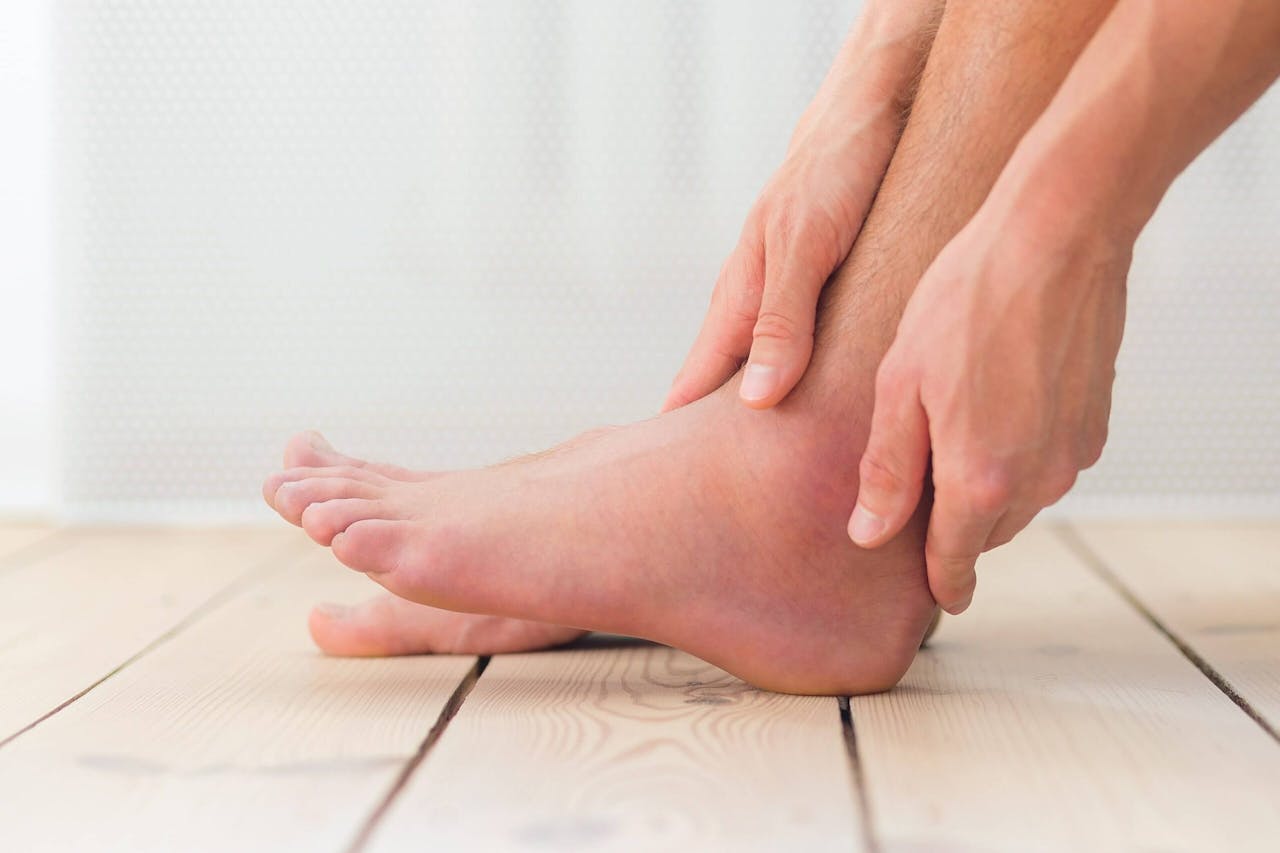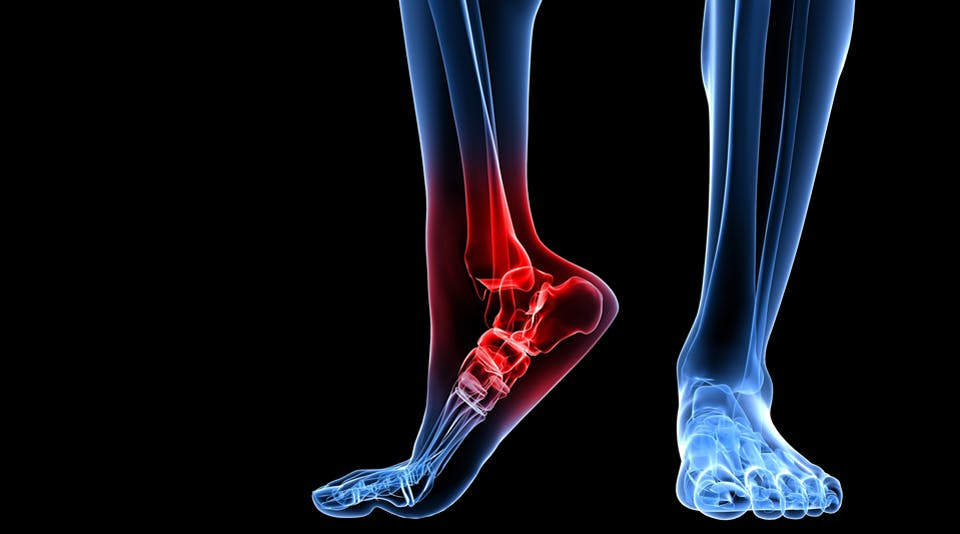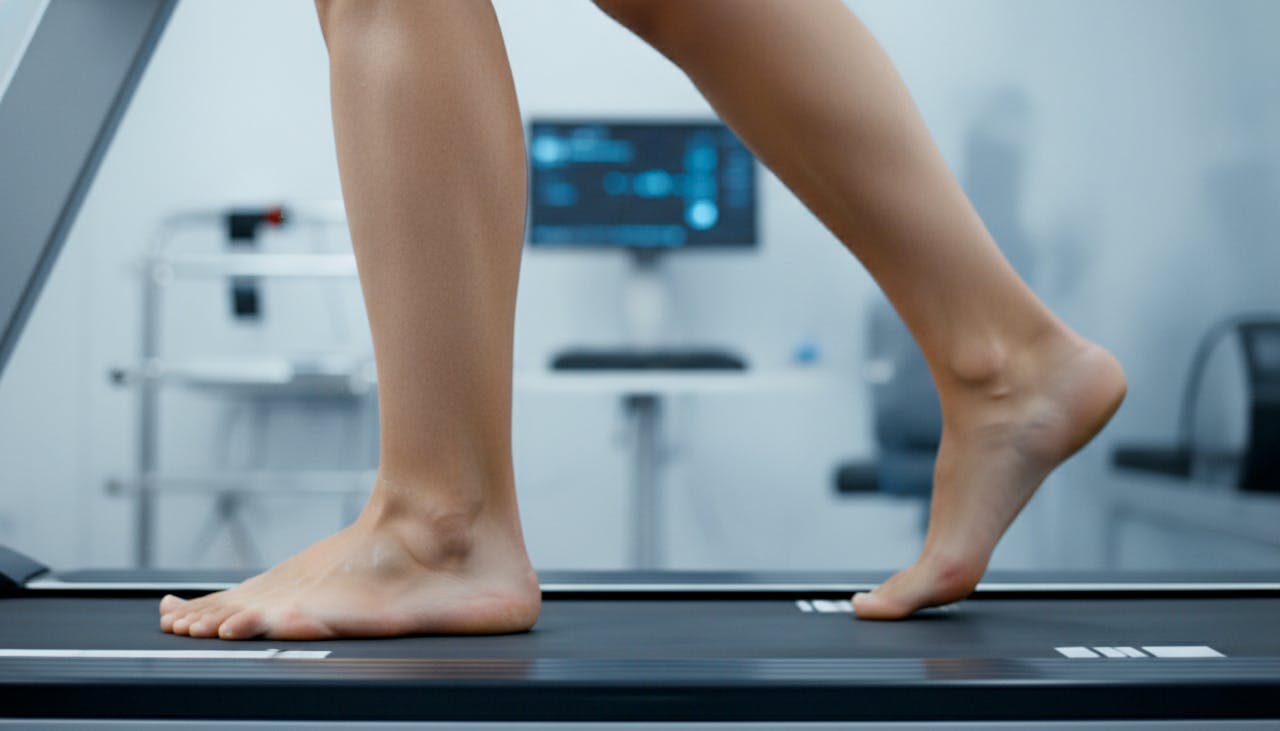
Ankle Sprain
An ankle sprain is a very common injury where the tough bands of tissue (ligaments) that support the ankle are stretched or torn, usually after "going over" on the foot.
Overview
What is it?
Ligaments are strong, fibrous bands that connect bones to other bones, holding joints together and keeping them stable. An ankle sprain occurs when you twist or roll your ankle awkwardly, forcing the joint out of its normal range of motion. This overstretches or tears these supporting ligaments.
How common is it?
It is one of the most common musculoskeletal injuries in the world. While frequently seen in athletes, it can happen to absolutely anyone—stepping off a curb awkwardly or walking on uneven ground is often enough to cause one.

Symptoms & Causes
What are the symptoms?
Immediate pain is the primary symptom, often accompanied by rapid swelling and bruising that can sometimes track down into the toes. You may find it difficult or impossible to put weight on the injured foot.
What does it feel like?
At the moment of injury, many patients report feeling a "pop" or "crack," followed by sharp pain. afterwards, the ankle often feels stiff, unstable, or "wobbly," as if it might give way again if you try to turn quickly.
What causes it?
Most sprains are "inversion" injuries, where the foot rolls inwards, damaging the ligaments on the outside of the ankle.
- Uneven Surfaces: Stepping in a pothole or on a tree root.
- Sports: Landing awkwardly from a jump (netball, basketball) or rapid changes in direction (football, tennis).
- Biomechanics: People with high-arched, rigid feet (supinators) naturally tend to roll outwards, making them more susceptible to inversion sprains.
- Previous Injury: Once you have sprained an ankle, you are significantly more likely to sprain it again if rehabilitation was incomplete, leading to Chronic Ankle Instability.
Some health conditions can include:
- Generalised Ligament Laxity: Being naturally hypermobile ("double-jointed") can make ankles less stable and easier to sprain.

How is it Diagnosed?
At Foot Factor, it is vital we determine the severity of the sprain (Grade 1 mild to Grade 3 complete tear) and ensure no bones are broken.
What tests are used to diagnose it?
- Physical Examination: We will gently palpate specific ligaments to find the exact site of the damage. We also use specific stability tests, like the Anterior Drawer Test, where we gently manipulate the heel to see if the ligaments are still holding the ankle firmly in place.
- Ottawa Ankle Rules: A specific set of clinical guidelines we use to determine if an X-ray is necessary to rule out a fracture.
- Imaging: If a severe Grade 3 sprain or a fracture is suspected, we will refer you for an X-ray or MRI.
Foot Factor provides Expert Podiatry Treatment Tailored to You.
At Foot Factor, our podiatrists specialise in diagnosing and treating foot pain with precision and expertise. With advanced gait analysis, bespokem orthotics, and sports-focused podiatry care, we don’t just identify the problem—we provide a targeted solution to get you back to moving pain-free. Book a consultation today and take the first step toward lasting relief.

How is it Treated?
Proper treatment goes beyond just ice; it is crucial to retrain the ankle to prevent it from becoming permanently unstable.
- Acute Phase (MICE): We have moved slightly away from strict Rest (RICE) to Movement, Ice, Compression, and Elevation (MICE). Gentle, controlled movement early on often aids recovery better than complete immobilisation.
- Functional Rehabilitation: This is critical. We guide you through exercises not just to strengthen the calf muscles, but to retrain your "proprioception" (your brain's ability to know where your foot is in space and react quickly to stop another roll).
- Supportive Orthotics & Bracing:
- If you have a high-risk foot type (like a high, unstable arch) that keeps causing sprains, custom orthotics can add a wider, more stable base to your foot to prevent future rolls.
- We may also recommend specific ankle braces for return to high-risk sports.
Our Bespoke Orthotics give you the Right Support for Long-Term Relief.
At Foot Factor, our podiatrists specialise in diagnosing and treating foot pain with precision and expertise. With advanced gait analysis, bespoke orthotics, and sports-focused podiatry care, we don’t just identify the problem—we provide a targeted solution to get you back to moving pain-free. Book a consultation today and take the first step toward lasting relief.
Related Articles
Find expert tips, advice, and insights to support your foot health and active lifestyle.


